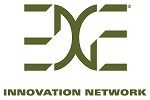Our mission is…
To address the Nation Dilemma on how to reduce the gap between R&D and deployment of emerging technology in advanced manufacturing, by researching Methodology-based Innovation Management models which will allow the R&D organizations and advanced manufacturing companies to Successfully Transit R&D Projects to Commercial Products.
Our mission is…To address the Nation Dilemma on how to reduce the gap between R&D and deployment of emerging technology in advanced manufacturing, by researching Methodology-based Innovation Management models which will allow the R&D organizations and advanced manufacturing companies to Successfully Transit R&D Projects to Commercial Products.

A National Innovation Dilemma : Gap between R&D and Deployment
The latest United States Strategic Plan for Advanced Manufacturing has identified a number of gaps in the present U.S. Innovation ecosystem. In particular, the gap between R&D projects and advanced technology deployment into the manufacturing sector.
Due to lack of resources, strategies and processes, the Small and Medium Advanced Manufacturing Enterprises (SME) even face more challenges and fail to transit external R&D and emerging technologies into their products. If these issues are not mitigated, this may result into loss of markets, profitability and may be future viability.
We conduct research to develop Innovation Management methodologies which may help these enterprises to mitigate such challenges.

Methodology-based Innovation Management
Our approach to manage Innovation consist of three inter-related methodologies – (a) Innovation Agenda, (b) Innovation Maturity Model, and (c) Empowering the knowledge workers to innovate.
The Innovation Agenda consists of developing Innovation Culture, preparing an Innovation & Technology Plan, and implementing the Plan. The Innovation Maturity Model has been designed to manage the enterprise Innovation maturity against the well accepted CMMI™ model. The knowledge workers should be empowered to innovate by teaching them the 21st century innovation-enabling skills. We classify the knowledge workers in two categories – STEM (Science, Technology, Engineering & Mathematics), and HUSS (Humanities and Social Science) professionals.

Successfully Transitioning R&D Projects to Commercial Products
We have researched and developed a three-phase process to successfully transit R&D projects and emerging technologies in the commercial products. These phases are : (a) Intellectual Property (IP) Management, (b) R&D Portfolio Management, and (c) Technology Transition Management.
IP Management deals with determining the enterprise IP needs to meet their strategic technology needs, and developing or acquiring external IP. The R&D Portfolio Management mainly deals with analyzing their IP, converting into manageable R&D elements, called Critical Research Elements (CRE), and maturing the CRE. Technology Transition Management mainly deals with transitioning the CRE into commercial products using their Product Lifecycle Management (PLM) practices.


